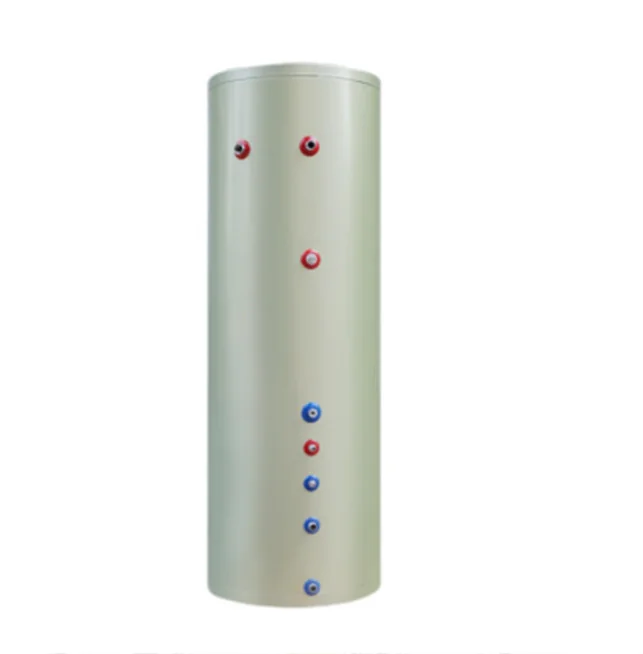Bonjour, les enfants ! Y a-t-il quelque chose de pire qu'une douche glaciale ou attendre des heures pour avoir de l'eau chaude convenable ? Ne vous inquiétez pas ! Un chauffe-eau à double réservoir peut vous aider avec ça ! C'est un chauffe-eau - je veux dire, il garde votre eau chaude au chaud. Des faits sur la machine à glace ! Êtes-vous prêts ? Partons !
Alors, qu'est-ce qu'un chauffe-eau à double réservoir ? C'est facile à comprendre ! Une couveuse pour l'eau (Image : SpaceDaily). Comme son nom l'indique, il a deux réservoirs ! Le réservoir extérieur contenant de l'eau est monté autour du réservoir intérieur. Ce réservoir extérieur garde votre réservoir d'eau intérieur au chaud et au confort. Dans un cylindre venté, le réservoir intérieur stocke votre eau chaude afin qu'elle soit immédiatement disponible. N'est-ce pas génial ? Donc, de l'eau chaude à la demande.
Comment ça fonctionne, me demanderez-vous ? Excellente question ! Lorsque vous activez le robinet d'eau chaude chez vous, cette fois-ci, l'écoulement d'eau provient d'un point situé dans la partie centrale de votre réservoir interne. Cet élément d'échange thermique ou cette partie spécifique réchauffe immédiatement l'eau. L'eau chaude sort ensuite du robinet pour que vous puissiez l'utiliser. C'est comme de la magie ! Ne vous inquiétez pas si vous manquez d'eau chaude ! Le chauffe-eau à réservoir peut recharger automatiquement le réservoir interne. Ainsi, vous avez de l'eau chaude à la demande !
Le charme des chauffe-eaux à réservoirs multiples réside dans le fait qu'ils peuvent être installés et intégrés dans divers endroits de la maison. Ceux-ci sont petits et faciles à mettre en place, ils sont donc très pratiques ! Sous-sol, grenier, garage ou même un placard. N'est-ce pas incroyable ? Que vous viviez dans une grande maison ou une maison moyenne, le chauffe-eau à réservoir trouvera certainement l'espace adéquat.

La meilleure chose avec les chauffe-eau à réservoir dans un réservoir est qu'il promet de l'eau chaude en tout temps ! Les deux réservoirs travaillent ensemble pour aider à prévenir la perte de chaleur. Et cela signifie que vous n'aurez pas à attendre longtemps que l'eau se réchauffe avant de prendre une douche ou un bain. Plus de douches froides ! Cela signifie que vous pouvez prendre une douche ou un bain chaud à n'importe quel moment de la journée (ou de la nuit) ! N'est-ce pas incroyable ?

Efficacité énergétique : L'un des aspects de son design est que les réservoirs dans un réservoir peuvent être utiles lorsqu'il s'agit d'économiser de l'énergie, ce qui vous fera également économiser de l'argent sur vos factures. Ils retiennent bien la chaleur, donc ils ne sont pas inefficaces énergétiquement. Cela aide aussi la planète !

Durabilité : Les chauffe-eau à réservoir dans un réservoir sont conçus pour durer longtemps et fonctionner efficacement. Ils sont fabriqués à partir de matériaux de qualité supérieure car ils peuvent résister à l'usure. Cela signifie que vous n'aurez pas à vous inquiéter pendant longtemps car ils dureront assez longtemps.
le chauffe-eau à réservoir dans un réservoir est certifié avec les certifications CE, CB et ERP pour le marché européen. Watermark pour le marché australien, UL pour le nord de l'Amérique, KTV pour la norme allemande de l'eau potable et WRAS pour la norme britannique de l'eau potable. Le réservoir d'eau de notre produit peut maintenant atteindre une classe A+ en perte de chaleur. Nous disposons également des certifications ISO9001, ISO14001, ISO45001 ; tous les matériaux répondent aux exigences de REACH et ROHS.
Les produits incluent des accessoires pour systèmes solaires, des réservoirs de récupération de chaleur, des réservoirs de stockage, des ballons d'eau chaude, des ballons à l'intérieur d'un autre ballon, et des réservoirs pour pompes à chaleur. SST propose également une gamme variée de produits en acier inoxydable, tels que des ballons d'eau chaude, des citernes et des systèmes solaires. SST offre des services ODM et OEM, compte 20 experts en technologie et R&D, ainsi que 6 lignes de production automatiques pour garantir un soudage de haute qualité.
SST Heating Energy Co., Ltd a été fondée en 2006. C'est le plus grand fabricant mondial de ballons à l'intérieur d'un autre ballon en acier inoxydable, utilisant la dernière technologie. Elle détient plus de 50 brevets d'invention et d'utilité. En plus de 18 ans, SST exporte des réservoirs d'eau et est classé n°1 dans les exportations de réservoirs d'eau. La superficie de l'usine dépasse 30 000 m², avec une production mensuelle de 10 000 pièces. La perte de chaleur peut atteindre jusqu'à A+.
SST dispose d'un laboratoire en acier inoxydable pour les matières premières. Le laboratoire propose une analyse des composants des matières premières ainsi que la chaudière à double réservoir, qui confirmera que nos matières premières sont conformes aux normes et exigences du test de corrosion ROHS qui vous permet de comparer la résistance à la corrosion de différents produits en acier inoxydable et des essais métallographiques pour tester les modifications de la structure tissulaire après soudure et des essais de traction pour déterminer la résistance, la tenacité et la fatigue. De plus, nous effectuons des tests de fatigue et de pression sur chaque réservoir pour garantir que les produits sont qualifiés.